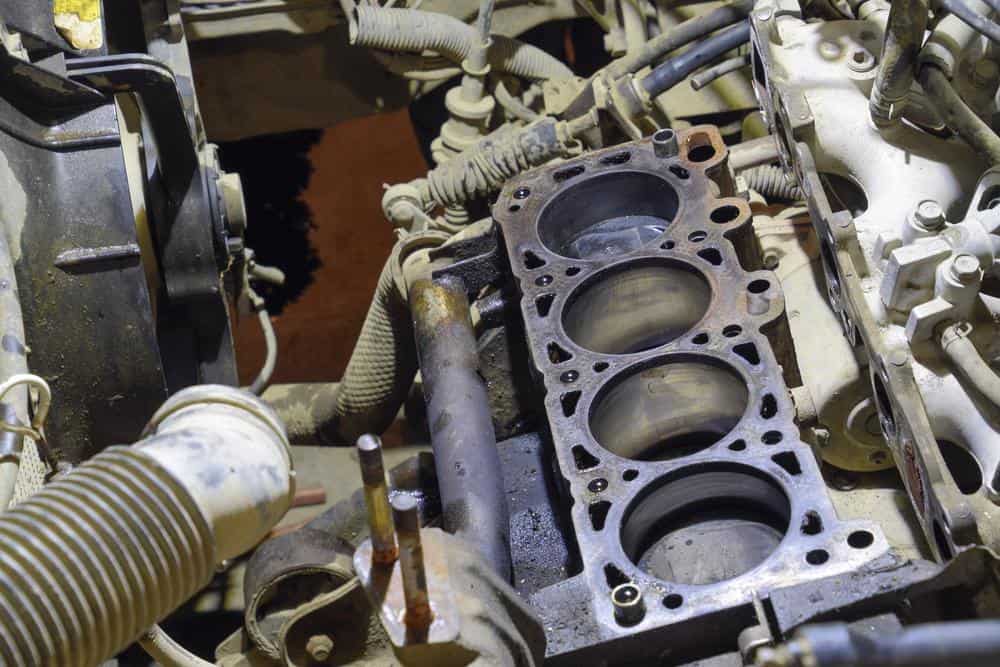
The head gasket, a seemingly small component in your vehicle’s engine, plays a crucial role in maintaining the integrity of the engine’s various compartments. A malfunctioning head gasket can lead to significant issues, making head gasket repair a vital aspect of vehicle maintenance. In this comprehensive guide, we will explore the signs of a failing head gasket, the repair process, and why timely intervention is essential for the overall health and performance of your engine.
Table of Contents
Understanding the Head Gasket’s Role
1. Sealing Function:
The head gasket sits between the engine block and the cylinder head, serving as a crucial seal that prevents the mixing of oil, coolant, and combustion gases. It plays a pivotal role in maintaining the integrity of these compartments.
2. Heat Dissipation:
The head gasket also aids in heat dissipation, ensuring that the engine operates at optimal temperatures. This is essential for preventing overheating and maintaining overall engine efficiency.
3. Compression Control:
Another key function of the head gasket is to control the compression of the fuel-air mixture in the combustion chamber. This contributes to the engine’s performance and fuel efficiency.
Signs of a Failing Head Gasket
Detecting early signs of a failing head gasket is crucial for preventing further damage to the engine. Common indicators include:
1. Overheating:
If your engine consistently overheats, it could be a sign of a compromised head gasket. The failure of the gasket can disrupt the proper circulation of coolant, leading to overheating.
2. White Smoke from Exhaust:
White smoke emanating from the exhaust could indicate coolant leaking into the combustion chamber. This often points to a head gasket issue.
3. Milky Oil:
A milky or frothy appearance in the engine oil on the dipstick is a clear indication of coolant contamination. This suggests a breach in the head gasket.
4. Loss of Coolant:
If you notice a gradual decrease in coolant levels without any visible leaks, it may be due to a head gasket leak allowing coolant to enter the engine.
5. Poor Engine Performance:
A failing head gasket can lead to a loss of compression, resulting in decreased engine performance, reduced power, and poor fuel efficiency.
6. Bubbles in Radiator:
The presence of bubbles in the radiator when the engine is running indicates a potential head gasket issue, allowing exhaust gases to enter the cooling system.
The Head Gasket Repair Process
1. Diagnosis:
A professional diagnosis is the first step in head gasket repair. This often involves a thorough inspection, a compression test, and possibly a leak-down test to pinpoint the location and severity of the issue.
2. Engine Disassembly:
Repairing a head gasket typically requires partial or complete engine disassembly. This involves removing the cylinder head to access the head gasket.
3. Surface Inspection:
The surfaces of the engine block and cylinder head are inspected for any warping or damage. If necessary, machining may be performed to restore a flat surface.
4. Gasket Replacement:
The damaged head gasket is removed, and a new, high-quality gasket is installed. Choosing the right gasket material is crucial to ensure longevity and proper sealing.
5. Cylinder Head Reassembly:
Once the new gasket is in place, the cylinder head is reattached, and all components are reassembled. Proper torque specifications must be followed to ensure a secure seal.
6. Fluid Replacement:
Coolant and engine oil may need to be replaced after a head gasket repair to remove any contamination.
7. Pressure Test:
The repaired engine undergoes a pressure test to ensure that the head gasket is effectively sealing and that there are no leaks.
Importance of Timely Head Gasket Repair
1. Preventing Further Damage:
Timely intervention prevents the escalation of head gasket issues, avoiding additional damage to the engine and related components.
2. Preserving Engine Performance:
A well-functioning head gasket is crucial for maintaining optimal engine performance, fuel efficiency, and overall reliability.
3. Avoiding Costly Repairs:
Addressing head gasket issues promptly can prevent more extensive and costly repairs that may be necessary if the problem is left unattended.
4. Extending Engine Lifespan:
Proactive head gasket repair contributes to the longevity of your engine, ensuring that it continues to operate smoothly for an extended period.
5. Enhancing Safety:
A reliable engine is essential for safe driving. Timely head gasket repair contributes to the overall safety and reliability of your vehicle.
Conclusion
Head gasket repair is a critical aspect of maintaining a healthy and high-performing engine. Understanding the signs of a failing head gasket, the repair process, and the importance of timely intervention empowers vehicle owners to take proactive measures. Whether you’ve noticed symptoms of a head gasket issue or want to stay ahead of potential problems, seeking professional diagnosis and repair is key to preserving your engine’s health and ensuring a smooth and reliable driving experience.
[…] Physical therapy and ongoing assessments contribute to long-term recovery, ensuring patients regain optimal function and […]